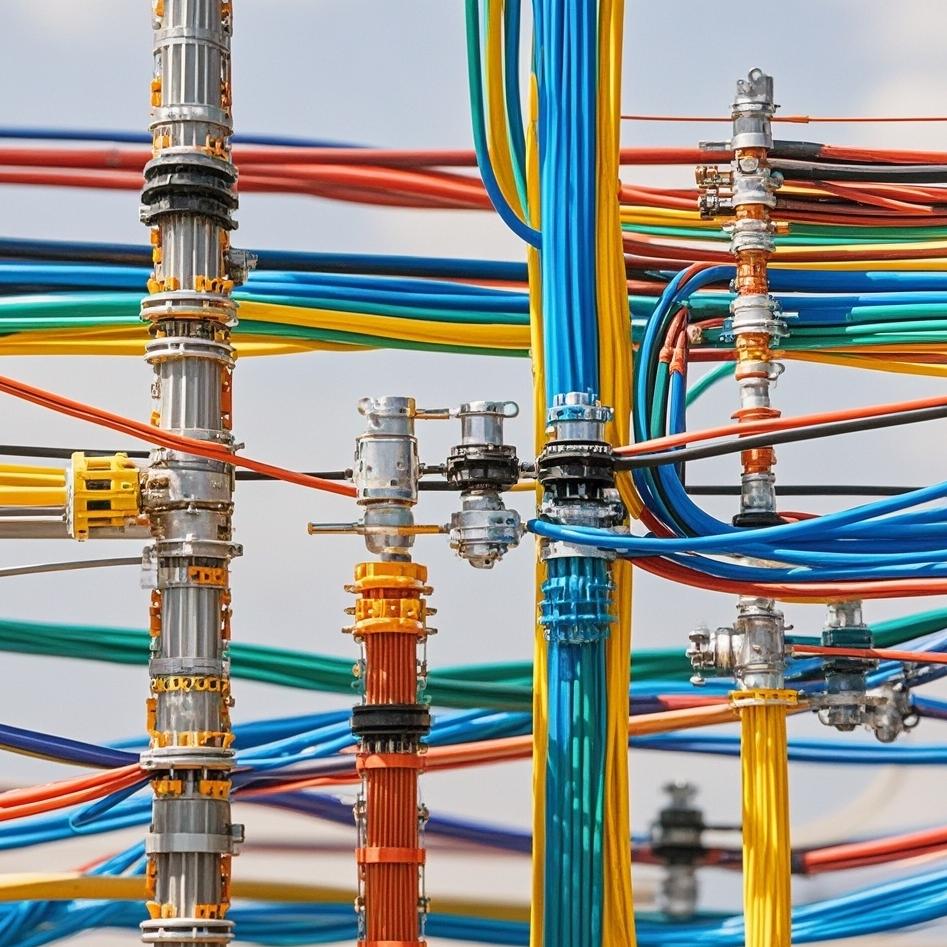What are the hazards of three-phase imbalance?
● Increase the power loss of the line
In a three-phase four-wire power supply network, when the current passes through the line conductor, power loss will be generated due to the existence of impedance, and the loss is proportional to the square of the current passing through.
When the low-voltage power grid is powered by three-phase four-wire, it is inevitable that the three-phase load is unbalanced due to the existence of single-phase load. When the three-phase load is unbalanced, current passes through the neutral line.
In this way, not only the phase line has loss, but also the neutral line has loss, thereby increasing the loss of the power grid line.

● Increase the power loss of the distribution transformer
The distribution transformer is the main power supply equipment of the low-voltage power grid. When it operates under the condition of three-phase load imbalance, it will cause an increase in the loss of the distribution transformer. Because the power loss of the distribution transformer varies with the imbalance of the load.
● The output of the distribution transformer is reduced
If the distribution transformer is operating under the condition of unbalanced three-phase load, the phase with light load has surplus capacity, which reduces the output of the distribution transformer. The degree of output reduction is related to the imbalance of the three-phase load. The greater the imbalance of the three-phase load, the greater the reduction of the distribution transformer output.
For this reason, when the distribution transformer is operating under unbalanced three-phase load, its output capacity cannot reach the rated value, its spare capacity is also reduced accordingly, and its overload capacity is also reduced. If the distribution transformer is operating under overload conditions, it is very easy to cause the distribution transformer to heat up, and even cause the distribution transformer to burn in severe cases.
● Distribution transformer generates zero-sequence current
When the distribution transformer is operating under unbalanced three-phase load conditions, it will generate zero-sequence current, which will change with the degree of imbalance of the three-phase load. The greater the imbalance, the greater the zero-sequence current.
If there is zero-sequence current in the distribution transformer in operation, zero-sequence magnetic flux will be generated in its iron core. (There is no zero-sequence current on the high-voltage side) This forces the zero-sequence magnetic flux to pass only through the oil tank wall and steel components. The magnetic permeability of steel components is low.
When the zero-sequence current passes through the steel components, hysteresis and eddy current losses will be generated, which will cause the local temperature of the steel components of the distribution transformer to rise and heat up.
The insulation of the winding of the distribution transformer accelerates aging due to overheating, resulting in a reduction in the life of the equipment. At the same time, the existence of zero-sequence current will also increase the loss of the distribution transformer.

● Impact on the safe operation of electrical equipment
The distribution transformer is designed according to the three-phase load balanced operating condition, and the resistance, leakage reactance and excitation impedance of each phase winding are basically the same. When the distribution transformer operates under three-phase load balance, its three-phase current is basically equal, and the voltage drop of each phase inside the distribution transformer is basically the same, then the three-phase voltage output by the distribution transformer is also balanced.
If the distribution transformer operates under three-phase unbalanced load, the output current of each phase is not equal, and the three-phase voltage drop inside the distribution transformer is not equal, which will inevitably lead to three-phase imbalance of the distribution transformer output voltage.
At the same time, when the distribution transformer is running under unbalanced three-phase load, the three-phase output current is different, and the neutral line will have current passing through. As a result, the neutral line generates impedance voltage drop, which causes the neutral point to drift, causing the phase voltage of each phase to change.
The voltage of the phase with heavy load decreases, while the voltage of the phase with light load increases. When supplying power under unbalanced voltage conditions, it is easy to cause the user's electrical equipment connected to the phase with high voltage to burn out, while the user's electrical equipment connected to the phase with low voltage may not be used.
Therefore, when the three-phase load is unbalanced, it will seriously endanger the safe operation of the electrical equipment.
● Reduced motor efficiency
Since the positive sequence magnetic field is much stronger than the negative sequence magnetic field, the motor still rotates in the direction of the positive sequence magnetic field. However, due to the braking effect of the negative sequence magnetic field, the motor output power will inevitably decrease, resulting in a decrease in motor efficiency.
At the same time, the temperature rise and reactive power loss of the motor will also increase with the imbalance of the three-phase voltage. Therefore, it is very uneconomical and unsafe for the motor to operate under the condition of unbalanced three-phase voltage.
How to improve the three-phase imbalance?
● Pay attention to the reasonable distribution of three-phase loads
In the distribution of three-phase loads, power workers should carefully collect and record relevant data in actual work to achieve a state that can predict the power load to a certain extent.
Secondly, a better three-phase balanced distribution problem can be achieved by installing a balancing device. In some places where low-voltage three-phase four-wire system is used, an unbalanced current reactive power compensation device can be added to solve the various consequences caused by the unbalanced current phenomenon that often occurs in the power grid.
Such a device can not only compensate for the system reactive power, but also adjust the effect of unbalanced active current. In addition, according to the different load moments in actual situations, the appropriate adjustment of the wiring method also has a certain impact on the reasonable distribution of three-phase loads.

● Methods for the treatment of unbalanced current in three-phase loads
According to the compensation principle of unbalanced current susceptance, at any certain moment, there is mainly three-phase ungrounded unbalanced load, then each of them can be connected in parallel with a resistor and a capacitor.
When the distribution transformer is to compensate for unbalanced current, the following principles should be met.
First, it should be noted that the treatment of current should have two contents, one is to compensate the power factor, and the other is to adjust the three-phase current imbalance. These two together determine the reactive power required for compensation.
Second, in actual engineering construction, a full capacitive treatment method should be adopted to distinguish it from inductive compensation to avoid serious over-compensation.
The third point is that it is necessary to consider that the load will change over time. Based on this characteristic, the compensation amount should also be appropriately adjusted according to the change of load.
The fourth point is the limitation of the number of switching on and off of the device switches and compensation equipment. The optimization plan for the whole day should be strategically managed during the design.
In short, when setting the proportional adjustment coefficient, it is necessary to consider the power factor restriction and the over-compensation restriction at the same time.

● Add detection and adjustment of three-phase load
It is also very necessary to regularly open the detection of three-phase load. After the reasonable distribution and control of the three-phase, the relevant departments should open the detection work.
The balance of electricity cannot be absolute, but can only try to achieve relative balance. In the actual detection work, all departments should use the balance measurement indicators formulated by the state and relevant departments as a standard, record and analyze the results of the detection professionally, and regularly detect the load current of each phase, so as to timely discover some three-phase imbalance conditions.
When a part with safety hazards is found during the detection process, it should be adjusted and modified in time. For the parts where no problems are found during the detection process, vigilance should also be increased. After the detection is completed, not only data collation and analysis are required, but also timely feedback is required.
The feedback here mainly refers to the adjustments that need to be made to the three phases based on the test results, as well as the prediction of the possibility of using new technologies in the three phases. Through reasonable testing and in-depth analysis of the test results, we can avoid the occurrence of imbalance to the greatest extent and reduce the occurrence of power accidents.






